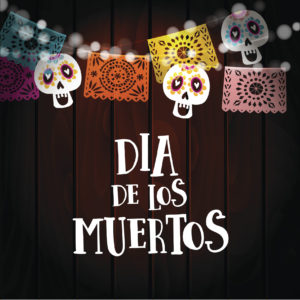
Día de los Muertos, known to English speakers as the “Day of the Dead,” is a holiday usually celebrated on November 2 across North, South, and Central America. Though this is a holiday that dates back to times long before the modern age, there are plenty of people who have never heard of it before. Though you might not be all too familiar with this holiday, it stands to reason you have seen some of the images associated with celebrating Dia de los Muertos.
Holidays and customs change throughout the course of history. In the example of Dia de los Muertos, it is easy to see how one culture influences another over the decades. Take a look at these interesting facts surrounding the “Day of the Dead” and learn more about the upcoming holiday and how it is usually celebrated.
Origin Story
As with many modern holidays, the roots of Dia de los Muertos extend far into the past. Long ago in the region now known as South and Central America, there were a number of powerful and expansive tribes. These groups, including well-known names like the Mayans and Toltecs, shared a number of rituals and occasions. Many of these rituals centered on paying proper respect to the departed. Specific months out of the year were set aside for mourning and celebrating those who had passed away.
Much of this changed with the onset of colonial imperialism. When the Spanish came to South America in the late 1400s, they brought with them all of their holidays and dates of cultural significance. While this time period saw the eradication of many indigenous tribes through violent means, many ancient customs survived. In fact, Dia de los Muertos as it is known today comes from a melding of the ancient practices South American tribes used to honor their dead with All Soul’s Day, a Christian holiday brought along with the Spanish and celebrated November 2 each year.
Life and Death
As with many customs, the way Dia de los Muertos has been celebrated has changed a lot over the years. Despite all of these changes, however, many rituals remain true to the core. While the images associated with this holiday – like skulls – are typically associated with death, the holiday itself is more of a celebration of life. Instead of mourning a loved one who has passed away, the idea is to use this holiday as a way of celebrating the life of the departed.
One way families pay respect to the dead is by setting up an ofrenda. Literally translated to mean “offering,” an ofrenda is a small altar designed specifically for Día de los Muertos. Family members place a photo of the deceased on the altar alongside a number of items meant to represent the four elements of water, fire, wind, and earth. Families will also put on the altar specific items that meant a great deal to the departed, such as a favorite book or an article of clothing.
Changing Times
As times change, holidays begin to change as well. Though once known to mainly the people in South and Central America, Día de los Muertos is now celebrated all over the world. In fact, it is quite common to see people partaking in “Day of the Dead” rituals all across America and Europe. Though the customs vary from place to place, the core idea remains the same as it did thousands of years ago when the Mayans and Toltecs first began it.
Throughout the course of human history, holidays have come and gone along with the cultures that started them. Día de los Muertos is an example of a holiday that has grown stronger and more widespread with each passing year. This November 2, be sure to look around for signs of the celebration and join in on the festivities.

